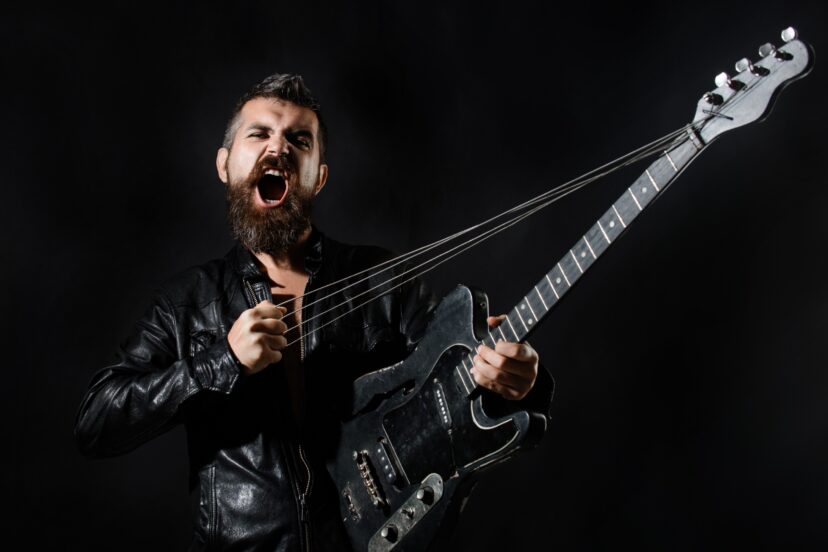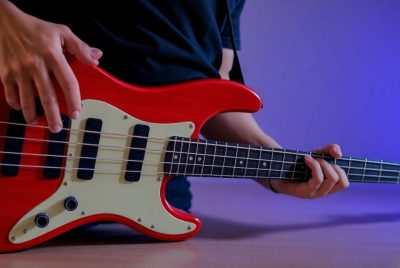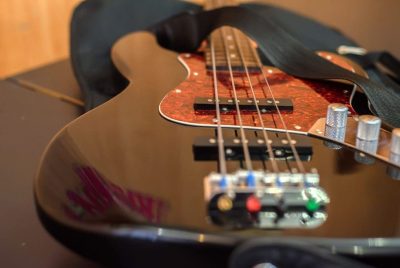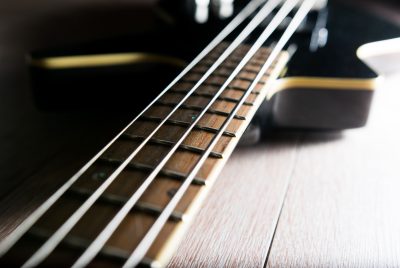Slap Bass Techniques: Spank that Bass
Introduction
You’ve seen it, you’ve heard it, and now you want to learn it – the dynamic and rhythmic world of slap bass techniques. I have never taken the time to get any good at it, but I really enjoy hearing it in the right situations.
The Appeal of Slap Bass
Impact on Musical Expression
Slap bass isn’t just a technique; it’s an expressive language. It’s like painting with bold, vibrant strokes on the canvas of rhythm. Today it is a very common technique to use, however like any technique, it has a time and place.
The Showmanship Aspect
Nothing quite captures an audience like a well-executed slap bass solo. It’s like the fireworks display of a bass performance. You may want to learn it when you are ready to light up the stage.
Getting Started: Basic Equipment
Choosing Your Bass
Not all basses are created equal, especially when it comes to slapping. It’s like choosing the right type of shoes for a dance. Some basses just seem better suited to this style of playing.
Amplification and Effect Pedals
The right amp and effects can turn your slap bass tones from good to extraordinary. It’s like the seasoning on a well-cooked meal. When you are ready to spice things up, you will want to experiment with the right setup.
Learning the Basics of Slap Bass
Slapping the Strings
Slap bass, a technique that blends rhythm and melody, has been a staple of funk and later found its way into rock, metal, and other genres. The technique involves ‘slapping’ the strings with the thumb and ‘popping’ them with the index or middle finger, creating a percussive, lively tone that can elevate any bass line. Here’s how you can start your slap bass journey.
Understanding the Slap Technique
First, let’s get the basics right. Position your thumb parallel to the strings and slap the string with the side of your thumb, close to where the neck meets the body of the bass. You’re not aiming for a strumming motion but a percussive hit – think of it as using your thumb as a drumstick hitting a drum.
Using Octaves and Muting
Octaves and muting are essential components of slap bass. An octave pattern (playing the same note, but one is higher in pitch than the other) is common in slap bass lines. Meanwhile, muting (using your fretting hand to silence the strings you’re not playing) is crucial to prevent unwanted noise.
Explore Different Slap Bass Lines
Once you’ve gotten the basics down, try playing along to some simple slap bass lines. Some songs to consider are “Thank You (For Lettin Me Be Myself Again)” by Sly and the Family Stone and “Higher Ground” by Red Hot Chili Peppers.
Popping the Strings
Popping is the yin to slapping’s yang. It’s the pull that gives your slap its push. Can you feel the tension and release? Use your index or middle finger to pull a string up and then let it snap back against the fretboard. This gives a sharp, aggressive tone, contrasting nicely with the thicker, deeper tone of the slap.
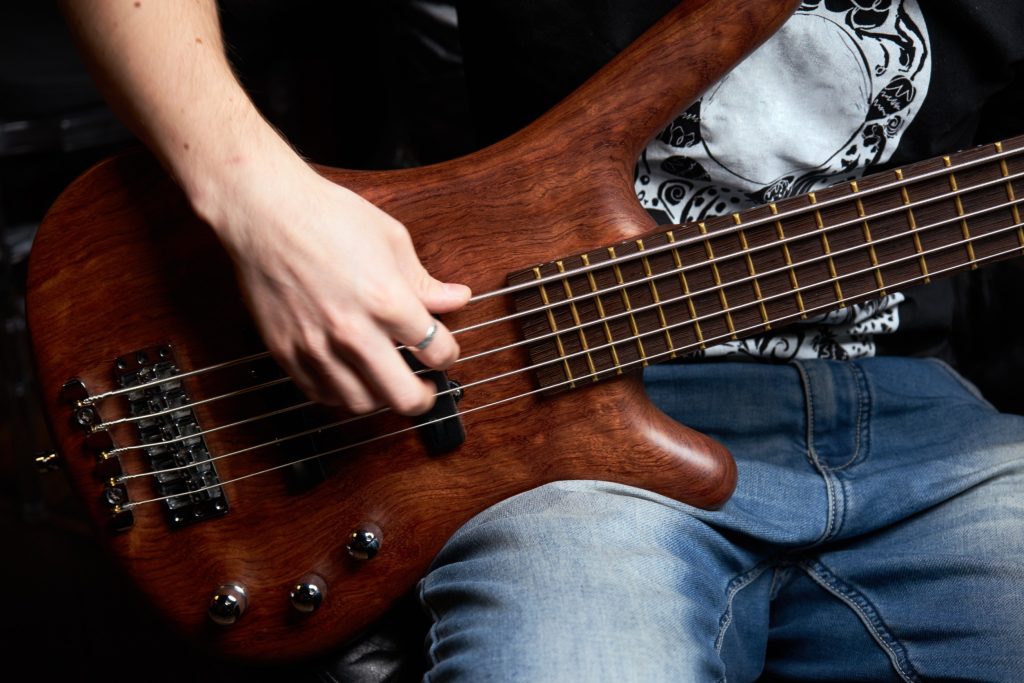
Enhancing Your Slap Bass Techniques
Ghost Notes and Muting
Ghost notes and muting are essential techniques in bass guitar playing that add rhythm, texture, and dynamics to bass lines, making them more expressive and groovy. These techniques are widely used across various music genres, from funk and jazz to rock and metal. Here’s a brief overview of both:
Ghost Notes
Ghost notes are percussive sounds produced by plucking a string without pressing it down to create a definite pitch. To play a ghost note, you lightly touch the string with your fretting hand but do not press it against the fretboard. When you pluck the string, it produces a muted, rhythmic sound rather than a note with a clear pitch. Ghost notes are used to enhance the rhythm and feel of a bass line, adding subtle nuances and a sense of movement.
Muting
Muting is a technique used to control the resonance and duration of notes or to produce muted notes intentionally. There are several muting techniques on the bass guitar:
- Left-Hand Muting: Using the fretting hand to lightly touch strings to stop them from ringing. This can be used to play ghost notes or to mute strings that are not being played to prevent unwanted noise.
- Right-Hand Muting: Using the palm or side of the plucking hand to dampen the strings near the bridge, producing a shorter, staccato sound. This can also involve resting the thumb or fingers on unused strings to keep them quiet.
- Palm Muting: Specifically, using the palm of the plucking hand to rest lightly on the strings at the bridge, creating a muted, thumpy sound. This technique is often used in rock and metal to give a percussive quality to the notes.
Combining Ghost Notes and Muting
Combining ghost notes with muting techniques allows bass players to create complex rhythmic patterns and textures. By interspersing ghost notes with fully voiced notes and employing strategic muting, a bassist can add depth and groove to their playing, making the bass line more compelling and engaging.
Practicing these techniques involves developing control over both hands, focusing on the precise timing of when to press and release the strings, and how to effectively use the plucking hand to create the desired sound. Mastery of ghost notes and muting can significantly elevate the expressiveness and professionalism of bass playing, contributing to the overall sonic landscape of a band or musical piece.
Hammer-Ons, Pull-Offs and Trills
Hammer-ons, pull-offs, and trills are expressive techniques on the bass guitar that allow for smoother note transitions and added musicality without the need for plucking each note. These techniques are integral to various music styles, enhancing bass lines with fluidity and speed. Here’s a brief overview of each technique:
Hammer-Ons
A hammer-on involves playing a note and then using a finger of your fretting hand to “hammer” onto a higher fret on the same string, producing a second note without plucking again. This technique allows for rapid note changes and smooth transitions between pitches. To execute a clean hammer-on, you need to quickly and firmly press down the string onto the fretboard just behind the intended fret.
Pull-Offs
The pull-off is essentially the opposite of a hammer-on. After playing a note, you “pull” your finger off the fretboard to a lower fret (or an open string) on the same string to sound the second note without re-plucking. The key to a successful pull-off is to slightly “pluck” the string with the fretting finger as you remove it, ensuring the second note rings out clearly.
Trills
A trill is a rapid alternation between two notes using hammer-ons and pull-offs. After plucking the initial note, you repeatedly hammer-on to a higher note and pull-off back to the original note in quick succession, creating a vibrating effect. Trills can be used to add excitement and tension within music, especially during solos or fills.
Practicing These Techniques
To master hammer-ons, pull-offs, and trills:
- Start slowly, focusing on the clarity and volume of each note.
- Gradually increase speed while maintaining precision.
- Practice on different strings and at various fret positions to develop consistency across the fretboard.
- Incorporate these techniques into scales, arpeggios, and musical passages to enhance fluidity in your playing.
Hammer-ons, pull-offs, and trills add expressiveness to bass lines and solos, enabling bassists to play more complex passages with ease. With regular practice, these techniques can significantly expand your playing dynamics, making your performances more engaging and versatile.
Mastering Advanced Slap Bass Techniques
Double Thumbing
Double thumbing allows for faster, more complex slap bass lines. It’s like learning to juggle with both hands. Get yourself ready for the challenge.
Flamenco Slap
The flamenco slap, or ‘rasgueado’, can give your slap bass a unique twist. It’s like learning a dance step from a different genre.
Practice Routines and Resources
Daily Practice Routines
Regular practice is key to mastering slap bass. It’s like a workout routine for your fingers. Start by practicing these techniques slowly. Accuracy and consistency are far more important than speed when you’re beginning. You can speed up gradually as you become more comfortable. There are plenty of resources out there to help you improve. It’s like having a library full of slap bass books at your disposal. Get ready to hit the books.
Conclusion
Slap bass is a thrilling, dynamic playing style that opens up new possibilities for musical expression. Whether you’re just starting or looking to enhance your skills, the journey is an exciting one. It will open up new opportunities to play different styles make you a more versatile bass guitarist.
FAQs
Q: Can you play slap bass on any bass guitar?
A: Yes, but some basses are better suited for slap due to their tonal characteristics and setup.
Q: What kind of music genres is slap bass used in?
A: Slap bass is most commonly used in funk, but it’s also found in rock, pop, jazz, and many other genres.
Q: Is slap bass hard to learn?
A: Like any technique, slap bass requires practice. Start slow, and with consistent practice, you’ll improve.
Q: How long does it take to get good at slap bass?
A: This varies widely depending on factors like your practice routine and previous experience. With daily practice, you should see improvement over weeks and months.
Q: Are there any famous slap bass players I should listen to?
A: Definitely! Some renowned slap bassists include Larry Graham, Flea (Red Hot Chili Peppers), and Les Claypool (Primus).

